Patternless California Snakes

| Look for a picture that is similar to the snake you want to identify, read the brief descriptions of behavior and habitat, look at the range map to see where the snake is found, and if everything fits your snake, click on the link to continue your search. |

| These are native California snakes with no pattern on the body. Patternless is defined here as an overall plain appearance with no strongly-marked stripes, bands, blotches, or any other strong pattern on the upper body, although there may be some markings such as a ring around the neck, markings on the head, a head colored differently from the body, light speckling, or markings on the underside. None of the patternless snakes native to California have venom that is considered dangerous to humans, but some aberrant rattlesnake can have little or no pattern and all rattlesnakes have dangerous venom. Some of those are also shown below. |
||
Rubber Boas - Genus Charina |
||
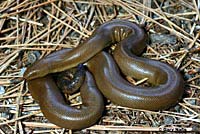 |
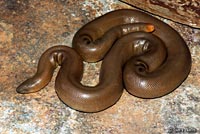 |
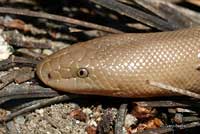 |
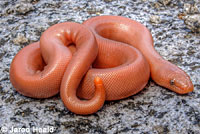 |
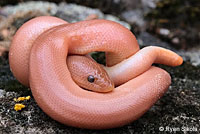 |
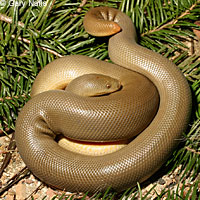 |
| Juvenile © Jared Heald | Juvenile © Ryan Sikola | |
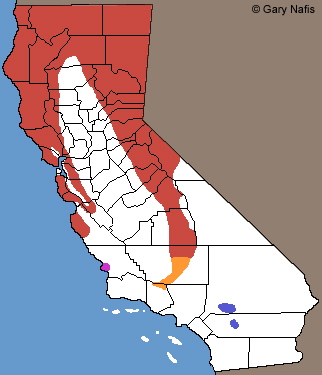 |
||
| Red and Blue: Ranges of the two species of Rubber Boas in California. Click on the map for a key to the different species. |
||
| ------------------------------------------------------------------------------------------------------------------------------------------------------------------------- | ||
Unicolor Rosy Boa - Lichanura orcutti |
||
 |
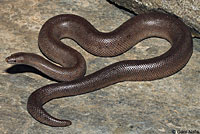 |
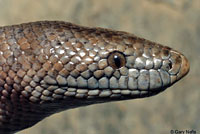 |
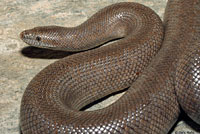 |
 |
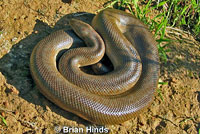 |
| Unicolor adult with faint dark stripe | © Brian Hinds | © Brian Hinds |
 |
||
| Red: Range of the Rosy Boa in California |
||
| ------------------------------------------------------------------------------------------------------------------------------------------------------------------------- | ||
Western Yellow-bellied Racer - Coluber constrictor mormon |
||
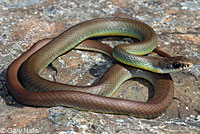 |
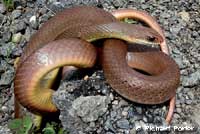 |
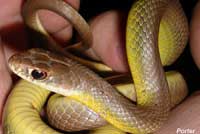 |
| © Richard Porter | © Richard Porter | |
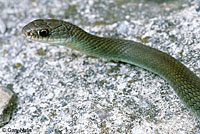 |
 |
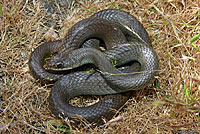 |
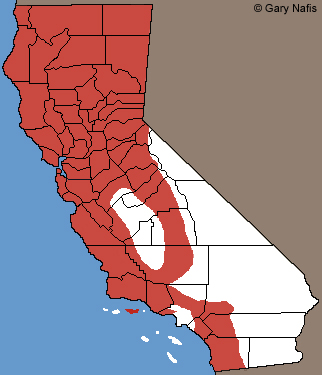 |
||
| Red: Range of the Western Yellow-bellied Racer in California |
||
| ------------------------------------------------------------------------------------------------------------------------------------------------------------------------- | ||
Blackheaded Snakes - Genus Tantilla |
||
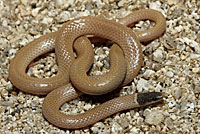 |
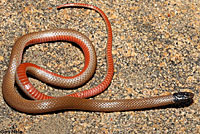 |
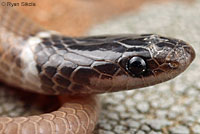 |
| © Ryan Sikola | ||
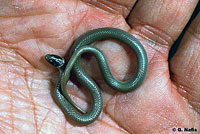 |
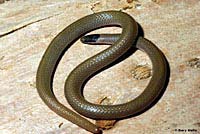 |
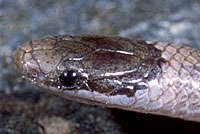 |
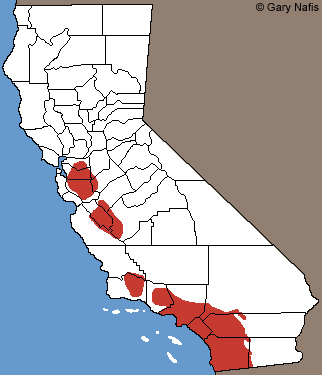 |
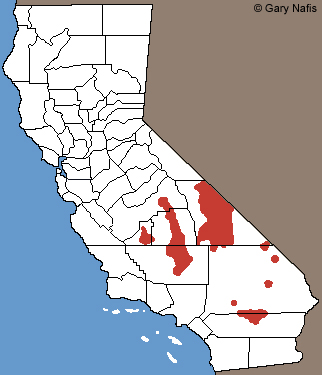 |
|
| Red: Range of the California Black-headed Snake |
Red: Range of Southwestern Black-headed Snake |
|
| ------------------------------------------------------------------------------------------------------------------------------------------------------------------------- | ||
Sharp-tailed Snakes - Genus Contia |
||
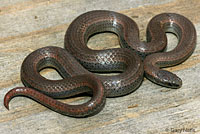 |
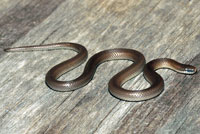 |
 |
 |
 |
 |
| © Deborah LaFleur | © Zachary Lim | Juvenile, © Ryan Sikola |
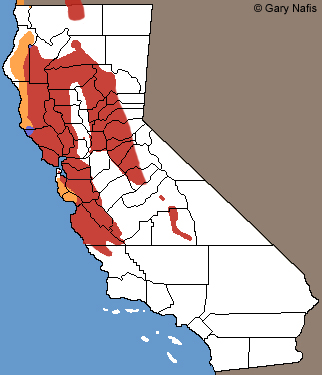 |
||
| Red and Orange: Ranges of Sharp-tailed Snakes in California. Click on the map for a key to the different species. |
||
| ------------------------------------------------------------------------------------------------------------------------------------------------------------------------- | ||
Ring-necked Snakes - Diadophis punctatus |
||
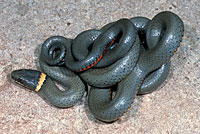 |
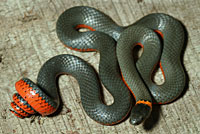 |
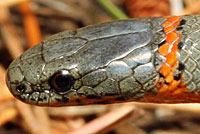 |
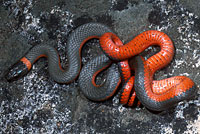 |
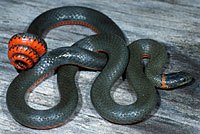 |
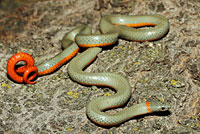 |
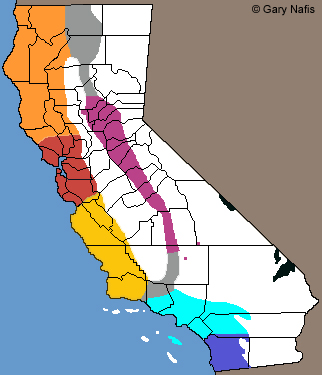 |
||
| Ranges of the seven forms of Ring-necked Snakes in California. Click on the map for a key to their names. |
||
| ------------------------------------------------------------------------------------------------------------------------------------------------------------------------- | ||
Threadsnakes (Blindsnakes) - Rena humilis |
||
 |
 |
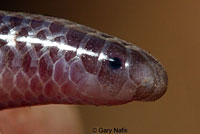 |
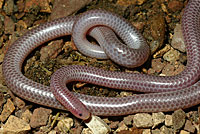 |
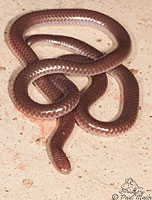 |
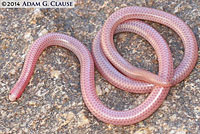 |
| © Paul Maier | © Adam G. Clause | |
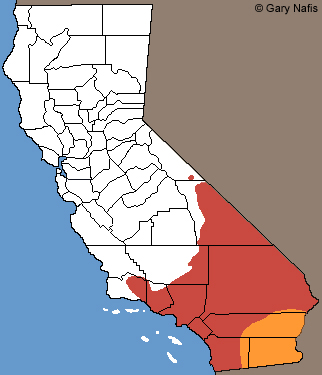 |
||
| Red and Orange: Ranges of the two subspecies of native Threadsnakes found in California. Click on the map for a key to their names. |
||
| ------------------------------------------------------------------------------------------------------------------------------------------------------------------------- | ||
Brahminy Blindsnake - Indotyphlops braminus |
||
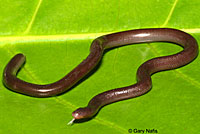 |
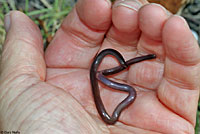 |
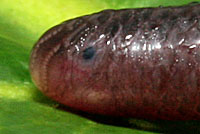 |
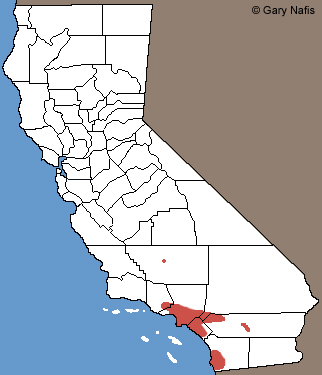 |
||
| Red: Estimated range of established populations of non-native Brahminy Blindsnakes in California. |
||
| ------------------------------------------------------------------------------------------------------------------------------------------------------------------------- | ||
Two-striped Gartersnake - Thamnophis hammondii |
||
 |
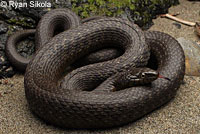 |
 |
| Melanistic adult. © Ryan Sikola | ||
 |
 |
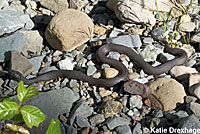 |
| © Brian Hubbs | © Ryan Sikola | © Katie Drexhage |
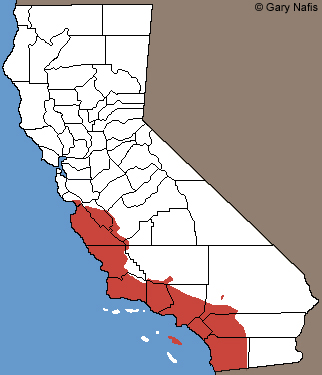 |
||
| Red: Range of Two-striped Gartersnake in California |
||
| ------------------------------------------------------------------------------------------------------------------------------------------------------------------------- | ||
Baja California Coachwhip - Masticophis fuliginosus |
||
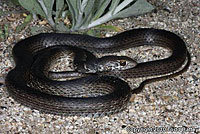 |
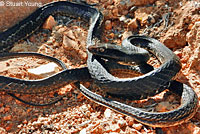 |
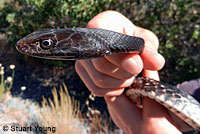 |
| Dark phase adult, © Todd Battey | Dark phase adult, © Stuart Young | |
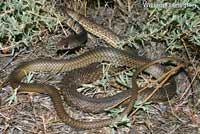 |
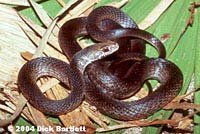 |
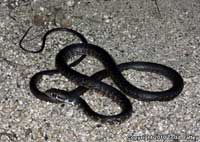 |
| Dark phase adult, © William Flaxington | Dark phase adult, © 2004 Dick Bartlett | Dark phase juvenile, © Todd Battey. |
 |
||
| Blue: Range of the Baja California Coachwhip in California |
||
| ------------------------------------------------------------------------------------------------------------------------------------------------------------------------- | ||
San Joaquin Coachwhip - Masticophis ruddocki |
||
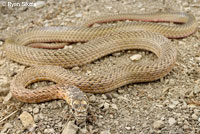 |
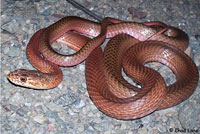 |
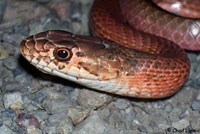 |
| Ryan Sikola | © Chad Lane | |
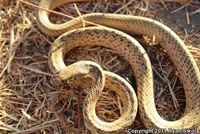 |
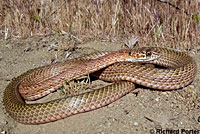 |
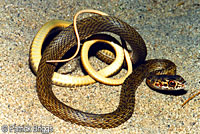 |
| Ryan Sikola | © Richard Porter | © Patrick H. Briggs |
 |
||
| Orange: Range of the San Joaquin Coachwhip |
||
| ------------------------------------------------------------------------------------------------------------------------------------------------------------------------- | ||
Baja California Ratsnake - Bogertophis rosaliae |
||
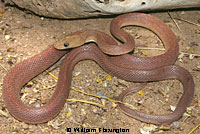 |
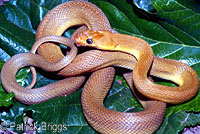 |
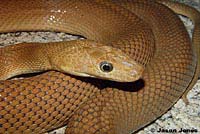 |
| © William Flaxington. |
© Patrick Briggs | © Jason Jones |
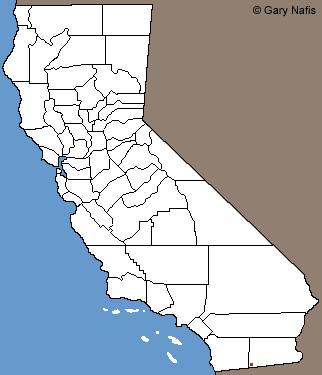 |
||
| Red: Possible Range of the Baja California Ratsnake in California |
||
| ------------------------------------------------------------------------------------------------------------------------------------------------------------------------- | ||
Aberrant Patternless Rattlesnakes - Genus Crotalus |
||
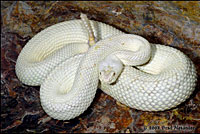 |
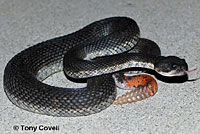 |
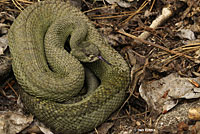 |
| Albino adult Northern Mohave Rattlesnake, Kern County © Brad Alexander |
Melanistic patternless Southern Pacific Rattlesnake, Riverside County. © Tony Covell |
A patternless green adult Northern Pacific Rattlesnake from Santa Cruz County © Ben Witzke |
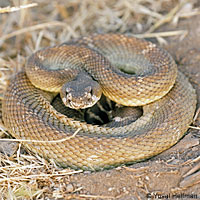 |
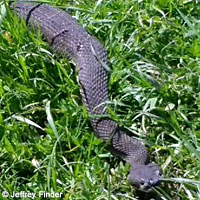 |
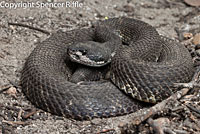 |
| The pattern on this unusual juvenile Northern Pacific Rattlesnakephotographed in Alameda County is very faint. It might be missing its black pigment. © Yuval Helfman | This large melanistic adult Northern Pacific Rattlesnake was seen in Contra Costa County. © Jeffrey Finder | This adult Northern Pacific Rattlesnake from Santa Cruz County is nearly patternless. © Spencer Riffle |
Return to the Top
© 2000 -
